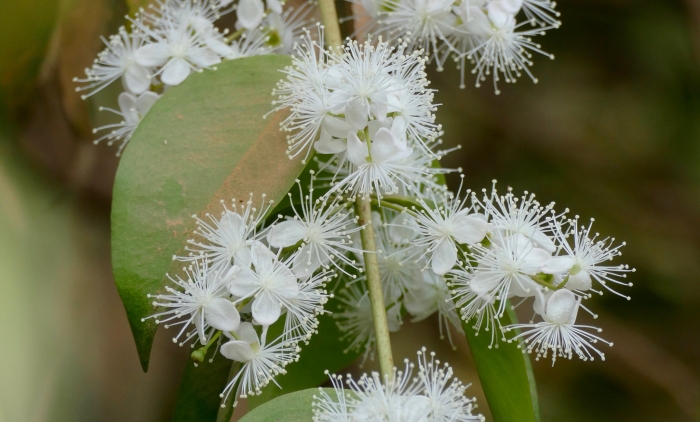Brush Cherry
(Eugenia biflora)
Brush Cherry (Eugenia biflora)
/
/

Bernard DUPONT
CC BY-SA 2.0
Image By:
Bernard DUPONT
Recorded By:
Copyright:
CC BY-SA 2.0
Copyright Notice:
Photo by: Bernard DUPONT | License Type: CC BY-SA 2.0 | License URL: https://creativecommons.org/licenses/by-sa/2.0/ | Uploader: Bernard DUPONT | Publisher: Flickr |


























Estimated Native Range
Summary
Eugenia biflora, commonly known as Brush Cherry, is an evergreen shrub or small tree native to the rainforests and moist forests of the American tropics. It can grow to a height of 25-40 feet (8-12 meters) and a width of 10-20 feet (3-6.1 meters), with a dense, rounded crown. The Brush Cherry has glossy, dark green leaves and produces clusters of fragrant white flowers, followed by edible red berries that are attractive to birds and other wildlife. Flowering typically occurs in spring, and the flowers are somewhat showy, adding to the plant’s ornamental value.
Brush Cherry is valued for its dense foliage and is often used for screening and hedging in gardens and urban landscapes. It can also be grown as a specimen plant or in containers. This species is relatively low-maintenance, tolerating a range of soil types, provided they are well-drained. It prefers full sun to part shade and requires regular watering, especially during dry periods. While it is generally pest-resistant, it can be susceptible to scale insects and sooty mold. In regions where it is not native, Brush Cherry can become invasive, so gardeners should be cautious and consider local regulations before planting.CC BY-SA 4.0
Brush Cherry is valued for its dense foliage and is often used for screening and hedging in gardens and urban landscapes. It can also be grown as a specimen plant or in containers. This species is relatively low-maintenance, tolerating a range of soil types, provided they are well-drained. It prefers full sun to part shade and requires regular watering, especially during dry periods. While it is generally pest-resistant, it can be susceptible to scale insects and sooty mold. In regions where it is not native, Brush Cherry can become invasive, so gardeners should be cautious and consider local regulations before planting.CC BY-SA 4.0
Plant Description
- Plant Type: Shrubs
- Height: 10-20 feet
- Width: 10-20 feet
- Growth Rate: Moderate
- Flower Color: White
- Flowering Season: Spring
- Leaf Retention: Evergreen
Growth Requirements
- Sun: Full Sun, Part Shade
- Water: Medium
- Drainage: Fast, Medium, Slow
Common Uses
Bee Garden, Bird Garden, Butterfly Garden, Low Maintenance
Natural Habitat
Rainforests and moist forests of Eastern Australia
Other Names
Common Names: Blackrodwood , Vassourinha , Black Rod-Wood , Hoja Menuda , Pitangueira
Scientific Names: Eugenia biflora , Eugenia salicifolia , Eugenia virgultosa , Myrcia schomburgkiana , Eugenia alfaroana , Eugenia racemosa , Eugenia dysantha , Eugenia biflora var. virgultosa , Eugenia lancea , Eugenia biflora var. ludibunda
GBIF Accepted Name: Eugenia biflora (L.) DC.